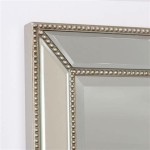How to Mirror Your iPhone to a Roku TV
Mirroring an iPhone screen to a Roku TV enables the projection of content from a smaller iOS device onto a larger display. This functionality proves beneficial for a range of applications, including viewing photos and videos, delivering presentations, browsing websites, and playing mobile games on a larger screen. Several methods exist to accomplish this, each with its own requirements and advantages. Understanding these methods allows users to select the most suitable approach for their specific needs and technical capabilities.
This article details the various methods available for mirroring an iPhone screen to a Roku TV, outlining the necessary steps, potential limitations, and troubleshooting tips for each. This will provide a comprehensive guide for successfully sharing content from an iPhone to a Roku-enabled display.
Using AirPlay (If Supported by Your Roku TV)
AirPlay is Apple's proprietary wireless streaming technology, designed to seamlessly connect Apple devices to compatible displays and audio systems. While not all Roku TVs support AirPlay, newer models often include this functionality. To determine if your Roku TV supports AirPlay, navigate to the settings menu. The presence of "Apple AirPlay and HomeKit" within the settings confirms compatibility.
If your Roku TV supports AirPlay, ensure that both your iPhone and the Roku TV are connected to the same Wi-Fi network. This is a fundamental requirement for AirPlay to function correctly. A stable and reliable Wi-Fi connection is also recommended for optimal performance and to prevent interruptions during streaming.
On your iPhone, access the Control Center by swiping down from the top-right corner of the screen (on iPhones with Face ID) or swiping up from the bottom of the screen (on iPhones with Touch ID). Within the Control Center, locate and tap the "Screen Mirroring" icon. A list of available devices on the same network will appear.
Select your Roku TV from the list of available devices. Your Roku TV will display an AirPlay passcode. Enter this passcode on your iPhone when prompted. This step is a security measure to prevent unauthorized screen mirroring. Once the passcode is entered correctly, the iPhone screen will be mirrored onto the Roku TV. Volume can be adjusted using either the iPhone or the Roku remote.
To stop mirroring, return to the Control Center on your iPhone, tap the "Screen Mirroring" icon, and select "Stop Mirroring." Alternatively, you can also disconnect from the Roku TV directly from the Roku's AirPlay settings.
Troubleshooting AirPlay connectivity issues typically involves verifying that both devices are on the same Wi-Fi network, ensuring AirPlay is enabled on the Roku TV, and restarting both the iPhone and the Roku TV. Firmware updates for both devices should be applied to ensure compatibility and address any potential bugs.
Using Third-Party Mirroring Apps
If your Roku TV does not natively support AirPlay, third-party mirroring applications offer an alternative solution. Several apps available on the App Store are designed to facilitate screen mirroring between iPhones and Roku TVs. These apps typically require installation on both the iPhone and the Roku TV (via the Roku Channel Store).
Popular third-party screen mirroring apps include "MirrorMeister," "AirBeamTV," and similar applications. The specific setup process may vary slightly depending on the app chosen, but the general principle remains the same: install the app on both devices, connect them to the same Wi-Fi network, and follow the app's instructions to establish a connection.
Before installing a third-party app, carefully review its reviews, ratings, and privacy policy. Some apps may contain advertisements or require payment for full functionality. Choose an app from a reputable developer with a proven track record of reliable performance and data security.
Once the app is installed on both the iPhone and the Roku TV, launch it on both devices. The app on your iPhone will typically scan for available devices on the same network. Select your Roku TV from the list of detected devices. The Roku TV app may display a code that you need to enter on your iPhone app to verify the connection.
Third-party apps may offer additional features beyond basic screen mirroring, such as the ability to adjust resolution, frame rate, and audio settings. These features can be useful for optimizing the streaming experience based on your network conditions and content type.
To stop mirroring when using a third-party app, follow the app's specific instructions. This typically involves tapping a "disconnect" or "stop mirroring" button within the app interface.
Potential issues with third-party mirroring apps include connectivity problems, lag, and compatibility issues. Ensure that both the iPhone and Roku TV are running the latest versions of the app and that the Wi-Fi network is stable. Contact the app developer for support if you encounter persistent problems.
Using Alternative Casting Methods (For Supported Apps)
Some iPhone applications, such as YouTube and Netflix, offer built-in casting functionality that allows you to directly stream content to a Roku TV without mirroring the entire screen. This method is often more efficient than screen mirroring, as it only streams the video content, rather than the entire iPhone display.
To use this method, ensure that both your iPhone and Roku TV are connected to the same Wi-Fi network. Open the supported application on your iPhone (e.g., YouTube, Netflix, Hulu). Look for a casting icon within the app's interface. This icon typically resembles a rectangle with a Wi-Fi symbol.
Tap the casting icon. A list of available devices on the same network will appear. Select your Roku TV from the list. The video content will then begin playing on your Roku TV. You can control playback (pause, play, fast forward, rewind) from your iPhone. In this mode, the iPhone can be used for other tasks without interrupting the video playback on the Roku TV.
This method offers several advantages over screen mirroring, including lower bandwidth consumption and improved battery life on the iPhone. Since only the video content is being streamed, the iPhone's processor is not burdened with mirroring the entire screen.
To stop casting, tap the casting icon again and select "Disconnect" or "Stop Casting." The video will then stop playing on the Roku TV and return to the app's main screen.
Troubleshooting casting issues typically involves verifying that both devices are on the same Wi-Fi network and that the app is up-to-date. If the Roku TV does not appear in the list of available devices, restart both the iPhone and the Roku TV.
The availability of casting functionality depends on the specific application. Not all iPhone apps support direct casting to Roku TVs. Check the app's documentation or settings to determine if this feature is available.
When choosing a method to mirror your iPhone to Roku, consider the following factors: your Roku TV's compatibility with AirPlay, the type of content you want to share (photos, videos, presentations, games), the importance of latency (lag), and your comfort level with installing and configuring third-party apps. If your Roku TV supports AirPlay, it is generally the simplest and most reliable option. If AirPlay is not supported, third-party mirroring apps provide a viable alternative. For streaming video content from supported apps, direct casting is often the most efficient approach.
By understanding the different methods available, users can effectively mirror their iPhone screens to their Roku TVs and enjoy their content on a larger display.
How To Mirror Your Iphone A Roku Tv

How To Screen Mirror Your Iphone A Roku Tv Otech

5 Easy Steps To Mirror Iphone Roku Istreamer

3 Easy Methods How To Mirror Iphone Rokutv Airdroid

How To Mirror Iphone Roku Without Wifi 5 Steps With Pictures

2024 Tutorial How To Mirror Iphone Tv Without Apple

How To Cast Content From Your Iphone A Roku Device Otech

How To Mirror Iphone Roku

How To Screen Mirror Iphone Roku Tv

5 Easy Steps To Mirror Iphone Roku Istreamer








